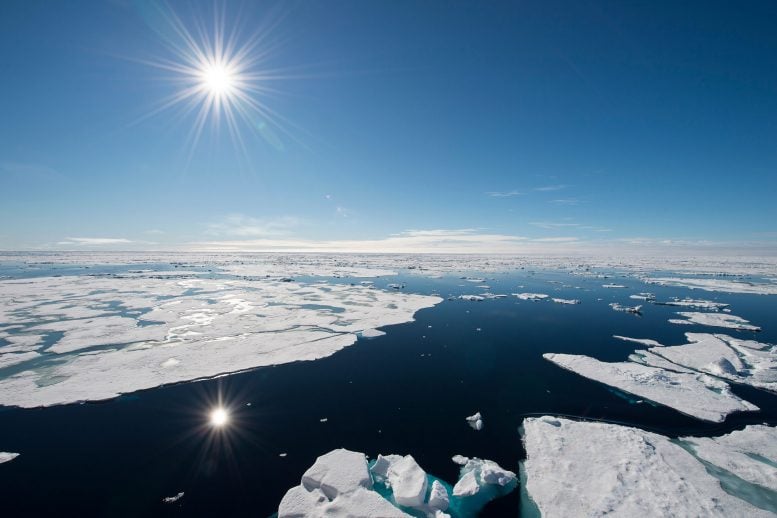
Sea ice coverage shifts over timescales of decades to centuries — so shrinking ice cannot be expected to return rapidly if climate change is slowed or reversed.
Arctic sea ice cannot “quickly bounce back” if climate change causes it to melt, new research suggests.
A team of scientists led by the University of Exeter used the shells of quahog clams, which can live for hundreds of years, and climate models to discover how Arctic sea ice has changed over the last 1,000 years.
They found sea ice coverage shifts over timescales of decades to centuries — so shrinking ice cannot be expected to return rapidly if climate change is slowed or reversed.
The study examined whether past ice changes north of Iceland were “forced” (caused by events such as volcanic eruptions and variations in the sun’s output) or “unforced” (part of a natural pattern).
At least a third of past variation was found to be “forced” — showing the climate system is “very sensitive” to such driving factors, according to lead author Dr. Paul Halloran, of the University of Exeter.
“There is increasing evidence that many aspects of our changing climate aren’t caused by natural variation, but are instead ‘forced’ by certain events,” he said.
“Our study shows the large effect that climate drivers can have on Arctic sea ice, even when those drivers are weak as is the case with volcanic eruptions or solar changes.
“Today, the climate driver isn’t weak volcanic or solar changes — it’s human activity, and we are now massively forcing the system.”
Co-author of the study Professor Ian Hall, from Cardiff University, said: “Our results suggest that climate models are able to correctly reproduce the long-term pattern of sea ice change.
“This gives us increased confidence in what climate models are telling us about current and future sea ice loss.”
When there is lots of sea ice, some of this drifts southwards and, by releasing fresh water, can slow the North Atlantic Ocean circulation, otherwise known as the Atlantic Meridional Overturning Circulation (AMOC).
The AMOC brings warm water from the tropics towards the Arctic, so slowing it down cools this region and allows sea ice to grow further.
So, with less ice the AMOC can bring in more warm water — a so-called “positive feedback” where climate change drives further warming and sea ice loss.
Quahog clams are thought to be the longest-living non-colonial animal on Earth, and their shells produce growth rings which can be examined to measure past environmental changes.
Dr. Halloran is part of the Global Systems Institute, which brings together experts from a wide range of fields to find solutions to global challenges.
The new study is part of a project including Cardiff University, the Met Office and an international team working on climate model simulations of the last millennium. The work was funded by the Natural Environment Research Council.
The paper, published in the journal Scientific Reports, is entitled: “Natural drivers of multidecadal Arctic sea ice variability over the last millennium.”
Reference: “Natural drivers of multidecadal Arctic sea ice variability over the last millennium” by Paul R. Halloran, Ian R. Hall, Matthew Menary, David J. Reynolds, James D. Scourse, James A. Screen, Alessio Bozzo, Nick Dunstone, Steven Phipps, Andrew P. Schurer, Tetsuo Sueyoshi, Tianjun Zhou and Freya Garry, 20 January 2020, Scientific Reports.
DOI: 10.1038/s41598-020-57472-2

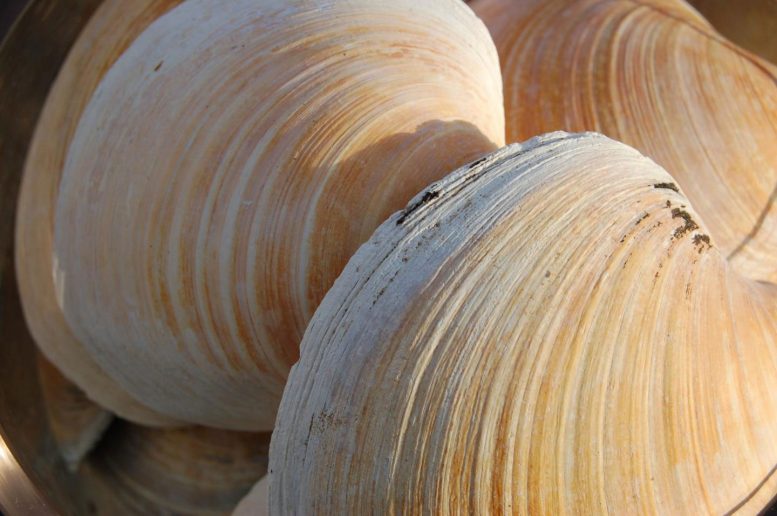

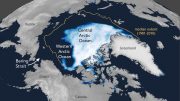
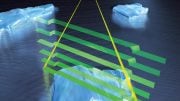
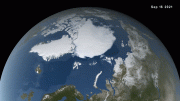
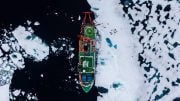
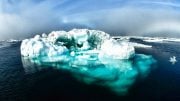
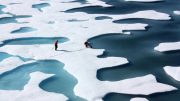
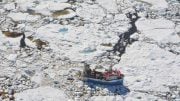
WARNING! WARNING! WARNING! A recent video by NASA or someone else of the ice formations of the North Pole for the last 50 years or more has shown that we have a major problem on our hands that is melting all the ice in the North Pole. The reason all the ice in the North Pole is melting is that the permafrost in Russia is melting rapidly and has been draining into the North Pole since around 1960 when global warming started getting out of hand due to the introduction of jet engine airplanes and the mass pollution by China in that region of the Earth caused by China’s massive industrial growth back then and now. The permafrost is prone to melting quicker than ice because of it’s formation. So the permafrost was melting it’s warmer water into the North Pole for 50 years or more and the videos showed how it melted the ice of the North Pole! If we allow this to continue in about 10 to 15 years all the ice will be melted and the world will be on a whole new environmental climate situation which will lead to much disaster and consequences worldwide! I’m warning ALL of you to do something to stop this now or the earth will be transformed into a model where nature will destroy all ways in which we do things now and force us into an unlivable situation. There is a lot to be said about what will happen but I haven’t heard a word yet from anyone but me. Why? You have better do something now before it’s too late because once the ice and snow and permafrost have melted there is no way to bring it all back! I’m old and will be dead soon so I won’t see this upcoming disaster in about ten years but all of you will so PLEASE do something now like stop flying jet engine airplanes world wide and go back to using propeller airplanes as well as stop using rockets of any kind! Then we ALL have to stop using combustion engine cars and either start using electric cars or use some other form of transportation. Then put a worldwide stop to fragging for oil and gas. Doing these few things would IMMEDIATELY and drastically stop global warming. Also stop buying anything from China until they control their pollution because that part of the world needs to cool down so that Russia’s permafrost isn’t melted.